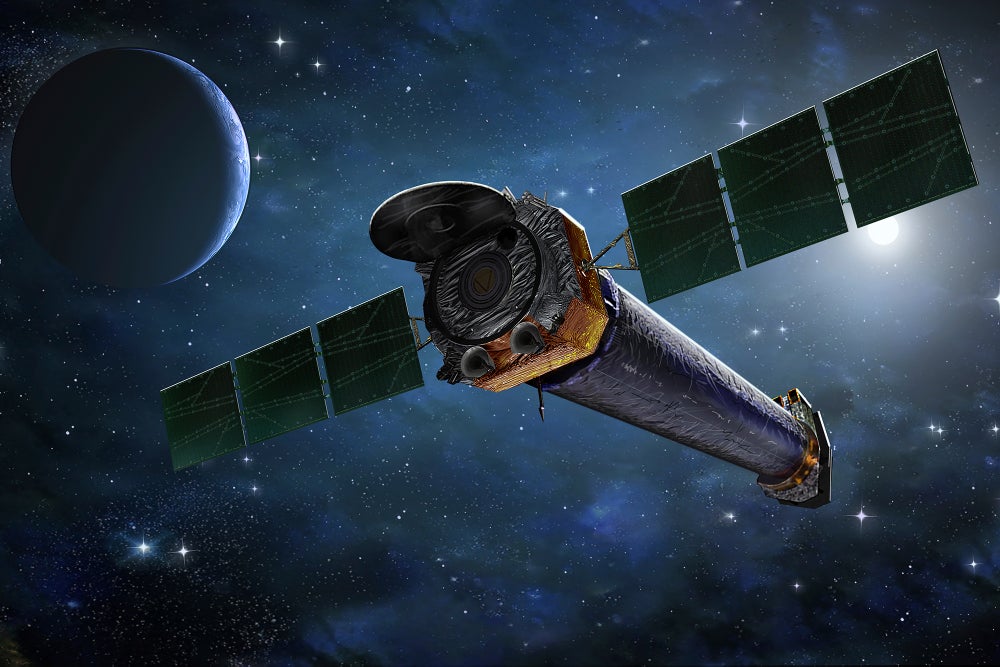Astronomers Fight to Save X-ray Telescope as NASA Dishes Out Budget CutsMARCH 21, 2024 BY JONATHAN O'CALLAGHAN [SA]
The Chandra X-ray Observatory faces a premature end under new funding cuts proposed by NASA—and astronomers aren’t happy An illustration of NASA's Chandra X-ray Observatory in a high orbit around Earth. Launched in 1999, Chandra remains a critical tool for x-ray astronomy—but budget cuts may soon draw its mission to a close. Credit: James Vaughan/Science Photo Library/Getty Images
An illustration of NASA's Chandra X-ray Observatory in a high orbit around Earth. Launched in 1999, Chandra remains a critical tool for x-ray astronomy—but budget cuts may soon draw its mission to a close. Credit: James Vaughan/Science Photo Library/Getty ImagesAnother of NASA’s “Great Observatories” is facing its end. Between 1990 and 2003 the space agency launched four magnificent machines into Earth orbit to observe the universe with different eyes, giving us a profoundly unmatched view of phenomena and vistas across the cosmos. The Compton Gamma Ray Observatory did so in gamma rays and was the shortest-lived; its mission ended in 2000. The Spitzer Space Telescope observed the universe in infrared until 2020. The Hubble Space Telescope—the opening shot in the Great Observatories program—is still going strong today with its transformative view of the universe in mostly visible light. And the Chandra X-ray Observatory did the same with its x-ray eyes—but perhaps not for much longer. In NASA’s latest budget request to Congress earlier this month, Chandra comes up short. The telescope—and its science—are degraded, NASA officials say; given the current climate of stopgap budget deals and correspondingly tighter purse strings, the agency has chosen to hasten the telescope’s end, freeing up the most of the $68 million per year currently spent on it over the course of the next five years. With Chandra gone, only Hubble would remain as the first—and last—of the Great Observatories.
https://www.scientificamerican.com/article/nasa-slashes-budget-for-chandra-its-greatest-x-ray-observatory/